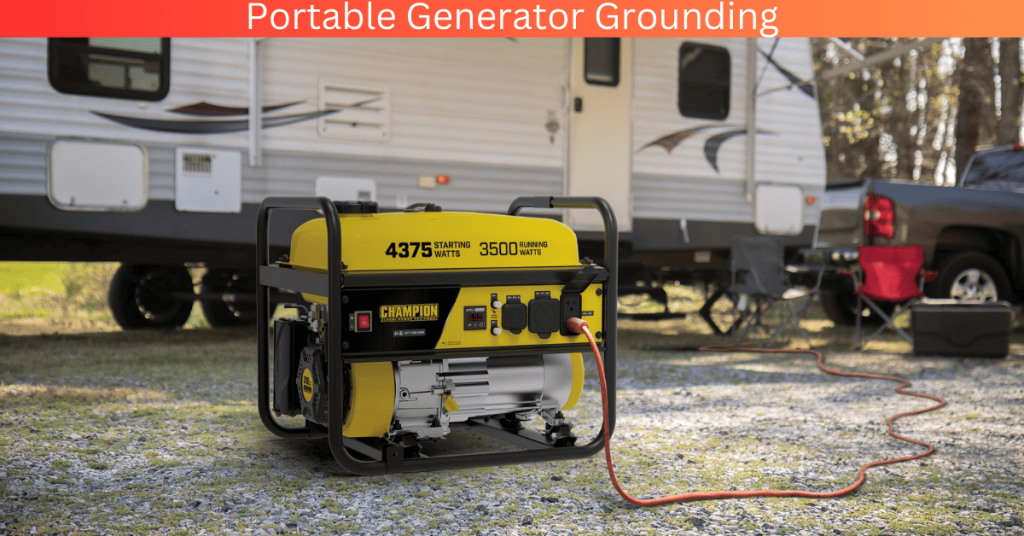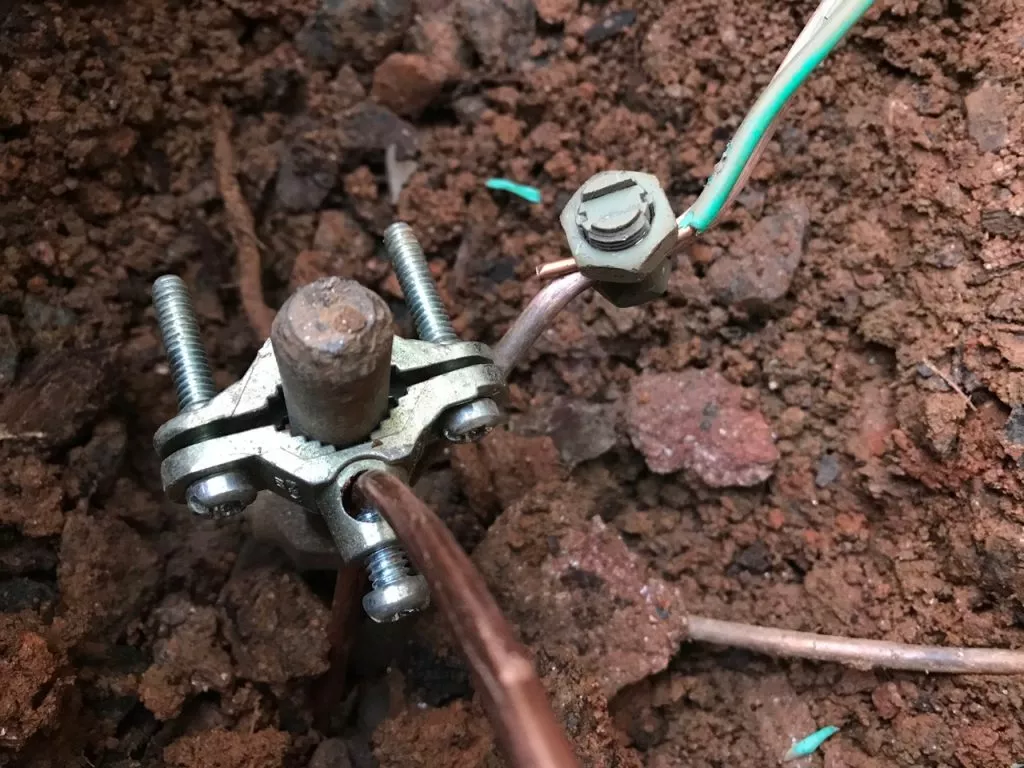Portable generators are a lifesaver during power outages, but to ensure the safety of both people and appliances, it’s crucial to understand proper grounding techniques. Grounding is vital for preventing electrical shocks and protecting your equipment from damage while complying with local regulations.
In this blog post, we will walk you through how and why you should ground your portable generator to make the most of its benefits while minimizing risks.
Key Takeaways
- Grounding a portable generator is crucial for preventing electrical shock and injury, protecting appliances from damage, and complying with local regulations.
- Using a copper grounding rod and wire is an effective way to ground your generator properly.
- Regular inspection and cleaning of grounding components are necessary for proper maintenance of your portable generator. It’s also important to follow the manufacturer’s instructions when connecting and maintaining the grounding system to ensure compliance with local regulations.
- Properly installing a well – maintained grounding system provides temporary access to electricity in times of unexpected power loss while minimizing risks.

Importance Of Grounding A Portable Generator
Grounding a portable generator is important to prevent electrical shock and injury, protect appliances and equipment from damage, and comply with local regulations.
Prevent Electrical Shock And Injury
As a generator owner, ensuring the proper grounding of your portable generator is crucial to prevent electrical shock and injury. Electrical safety should always be a top priority when operating any equipment that generates power, especially when dealing with electricity.
For example, imagine you’re using your portable generator at a campsite during a family outing. Your kids are playing nearby while you use electric appliances powered by the generator.
If the generator isn’t adequately grounded and an electrical malfunction occurs, everyone in the vicinity could be exposed to life-threatening electrical shocks. By taking proper precautions such as using suitable grounding rods and following manufacturer instructions on connecting them correctly, you can significantly reduce this risk and keep yourself and loved ones safe from harm.
Protect Appliances And Equipment From Damage
Proper grounding of your portable generator is essential not only for your safety, but also for protecting the appliances and equipment connected to it.
For instance, consider a scenario where you’re using a portable generator during a power outage to keep your refrigerator running and charge electronic devices like laptops and smartphones.
If the generator isn’t properly grounded, it’s vulnerable to sudden fluctuations in electrical current that could damage these sensitive electronics. By taking the time to set up an efficient grounding system, you’ll prolong the life expectancy of your appliances and protect them from costly damages – ultimately saving yourself both money and frustration in the long run.
Comply With Local Regulations
Complying with local regulations is an essential aspect of ensuring the safety and proper operation of your portable generator. As a generator owner, it’s vital to familiarize yourself with any applicable guidelines set forth by organizations such as OSHA, the National Electrical Code (NEC), and even your own local building codes.
For instance, grounding requirements for generators connected via transfer switches are covered under Article 250 of the NEC. This provides a comprehensive understanding of how to safely implement earth grounding techniques in accordance with legal standards.
Adhering to these regulations ensures that your portable power generator operates efficiently while minimizing the risk of electrocution or electrical shock.
How To Ground A Portable Generator
To ground a portable generator, start by locating the grounding bolt on the generator’s frame, then use a copper grounding rod that is at least 4 feet long and connect it to the generator’s grounding electrode with a properly-sized copper wire.
Locate Grounding Bolt
The first step in grounding a portable generator is to locate the grounding bolt. This bolt can be found on the metal frame of the generator and may vary in location depending on the make and model.
Once located, use a wrench to loosen it before securing a copper wire tightly around it using pliers. It’s important to ensure that the connection is tight enough so that there isn’t any wiggle room.
Use A Copper Grounding Rod
One of the safest and most effective ways to ground your portable generator is by using a copper grounding rod. This is because copper has exceptional electrical conductivity, which means it can quickly dissipate electrical current into the soil for safe disposal.
To use a copper grounding rod, locate the grounding bolt on your generator and connect one end of a copper wire to it and then attach the other end to the copper rod you have driven deep into the earth close to your generator.
Remember that proper installation is crucial when installing this type of grounding system, as any gap or break in its connection could cause risks like shock hazards, fires or damage due to voltage surges.

Properly Connect Grounding Wire
When grounding a portable generator, properly connecting the grounding wire is crucial for ensuring effective and safe operation. The grounding wire should be connected from the generator’s frame or ground terminal to the grounding rod using a ground clamp.
It is important to use heavy-duty copper wire when creating this connection.
Regular inspection and cleaning of all grounding components are necessary for proper maintenance of your portable generator.
Maintenance Tips For Proper Grounding
Regularly inspect and clean the grounding components, including the grounding rod and wire, to ensure they are in good condition and provide a secure connection.
Regular Inspection And Cleaning Of Grounding Components
As a generator owner, it’s crucial to ensure that all grounding components are in good condition to maintain proper grounding. Regular inspections and cleaning of these components are necessary to prevent electrostatic charge build-up, which can cause damage to the instruments and operators.
When inspecting grounding components, check for signs of wear or damage on wires, clamps, bolts, and rods. If there is noticeable wear or corrosion on any component, replace them immediately.
Cleaning the grounding components regularly also helps prevent dirt and debris from obstructing current flow.
Follow Manufacturer’s Instructions
One of the most vital aspects of properly grounding a portable generator is to follow the manufacturer’s instructions. Every generator has different requirements when it comes to grounding, and following these instructions will ensure that you are taking all necessary precautions to prevent any accidents or equipment damage.
For example, some manufacturers may require specific types of ground rods, while others might have specific recommendations for how long the grounding cable should be.
By following these guidelines set by your manufacturer and regularly inspecting your generator’s grounding components as per [IMPORTANT FACTS], you will keep yourself and those around you safe from electrical hazards when using a portable generator.
Conclusion
In conclusion, it’s crucial to ground your portable generator properly. Not only does proper grounding protect appliances and equipment from damage, but it also helps prevent electrical shock and injury.
Compliance with local regulations is another key reason why grounding a generator is necessary. By following the steps outlined above on how to ground a portable generator using a copper grounding rod and wire, you can ensure that your generator operates safely during power outages or other emergencies.
Regular maintenance of grounding components will further enhance the safety of your portable power backup system.
Why is grounding a portable generator important?
Grounding a portable generator helps protect against electrical shock and damage to electronic devices by directing excess electricity away from the unit and into the ground.
How do I properly ground my portable generator?
To properly ground your portable generator, you will need to connect it to an earth-grounded system using either a grounding rod or metal water pipe. It is recommended to consult with a licensed electrician for proper installation.
Can I use any type of wire for grounding my portable generator?
No, it is essential that you use a copper wire with insulating material suitable for outdoor use when grounding your portable generator. The gauge size of the wire should be determined based on the wattage output of your generator.
Do all generators require grounding?
All generators should be grounded as part of their safe operation procedures, but some models may include automatic grounding systems built-in, which may not require additional wiring or installation steps on behalf of the user.




